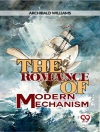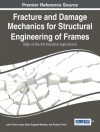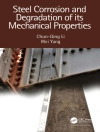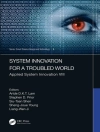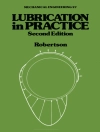Universal vehicular communication promises many improvements in terms of ac- dent avoidance and mitigation, better utilization of roads and resources such as time and fuel, and new opportunities for infotainment applications. However, before widespread acceptance, vehicular communication must meet challenges comparable to the trouble and disbelief that accompanied the introduction of traf c lights back then. The rst traf c light was installed in 1868 in London to signal railway, but only later, in 1912, was invented the rst red-green electric traf c light. And roughly 50 years after the rst traf c light, in 1920, the rst four-way traf c signal comparable to our today’s traf c lights was introduced. The introduction of traf c signals was necessary after automobiles soon became prevalent once the rst car in history, actually a wooden motorcycle, was constructed in 1885. Soon, the scene became complicated, requiring the introduction of the “right-of-way” philosophy and later on the very rst traf c light. In the same way the traf c light was a necessary mean to regulate the beginning of the automotive life and to protect drivers, passengers, as well as pedestrians and other inhabitants of the road infrastructure, vehicular communication is necessary to accommodate the further growth of traf c volume and to signi cantly reduce the number of accidents.
Tabella dei contenuti
Applications of Vehicular Communication.- Communication Regimes.- Information in the Vehicular Network.- Routing.- Medium Access for Vehicular Communications.- Physical Layer Technologies.- Security.
Circa l’autore
Radu Popescu-Zeletin is Professor at the Technical University Berlin, and, since its foundation, has been director of the Fraunhofer Institute for Open Communication Systems, FOKUS, (formerly a GMD Institute).
For many years he was head of the Research and Development Department of the BERKOM project at Deutsche Telekom. He has published numerous articles on distributed computer systems and applications. He is an active member of numerous standardization committees and is a leading player in the development of telecommunication standards. As holder of the Chair of Open Communication Systems, he also plays a major role in the development of the vision of I-centric Communications. Prof. Popescu-Zeletin has been appointed chairman of the Scientific Advisory Council of De Te Con International. As a member of the Motorola Visionary Board, he is one of 30 leading international experts helping to shape the future in the field of mobile communications. He has also been invited by the University of Technology, Tokyo to assume a full professorship; appointment formalities are now underway (early 2004).
Prof. Popescu-Zeletin graduated at the Polytechnic Institute in Bucharest, Romania, gained his Ph.D. at the University of Bremen, and habilitated at the Technical University of Berlin. Prof. Popescu-Zeletin is Senior Member of the IEEE, Doctor honoris causa at the Polytechnic Institute in Bucharest, and Professor honoris causa at the Catholic University of Campinas, Brasil. Furthermore he is member of the Motorola Visionary Board 2004/2005 as well as member of the Rumanian Academy. Prof. Popescu-Zeletin is bearer of the Public Service Medal of the Republic of Romania Ilja Radusch received his M.Sc. in Computer Science from the University of Technology Berlin (TUB). Since 2003 he is researcher with the Open Communication Systems (OKS) as well as with Fraunhofer FOKUS since 2005. Since 2006 he is group leader at the Daimler Center for Automotive Information Technology Innovations (DCAITI). He is working in the field of Car-2-Car Communication, Sensor and Ad-hoc Networks, and Context-aware Services. His responsibility includes several projects for industry partners such as Deutsche Telekom and Daimler Chrysler as well as research projects for the German Ministry of Education and Research and the European Union. Furthermore, he is giving various lecture courses at the TU Berlin Mihai Adrian Rigani received his degree in Electrotechnics in 2005 at Polytechnic University of Bucharest. Since then he is research scientist with the Daimler Center for Automotive Information Technology Innovations (DCAITI) at the Open Communication Systems (OKS) department of the Technische Universität Berlin (TUB).


